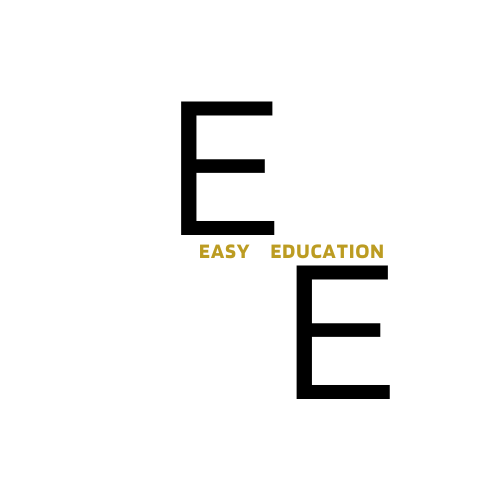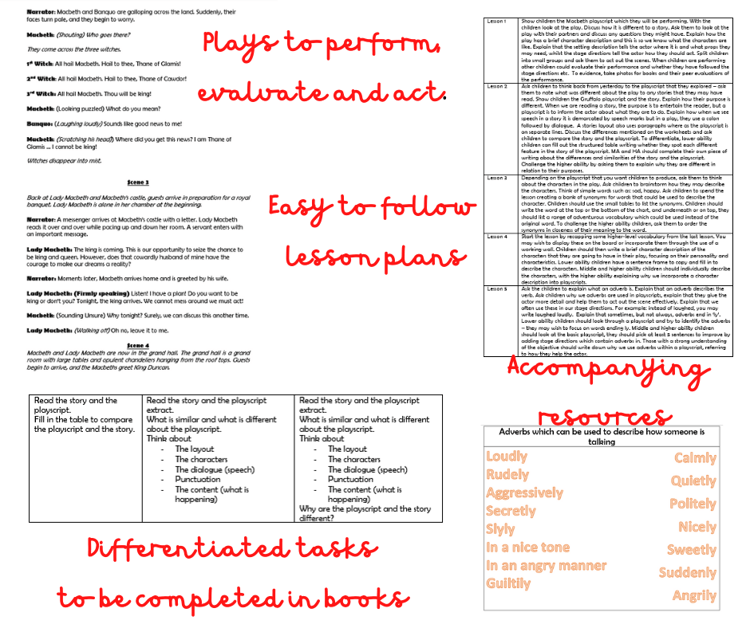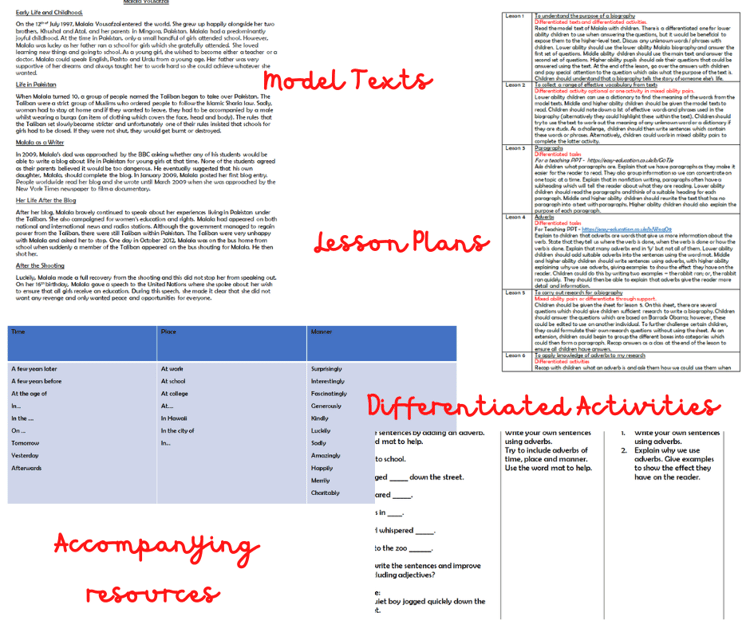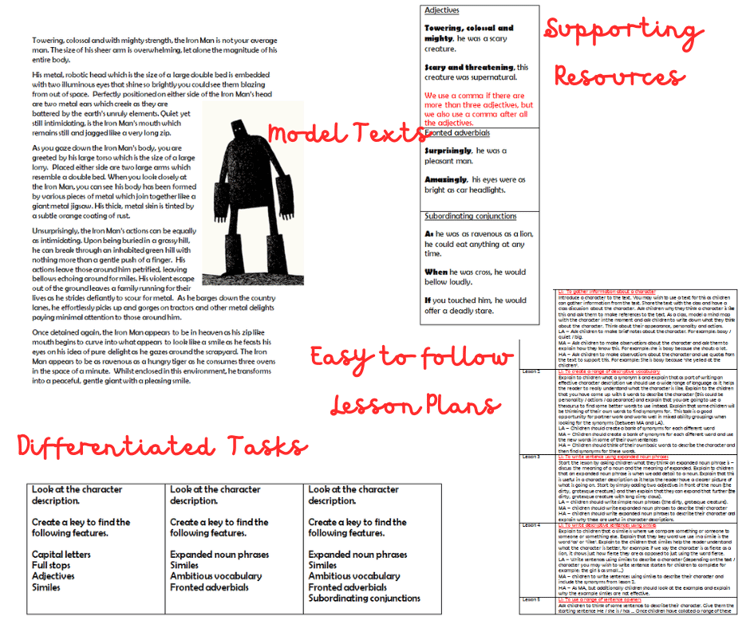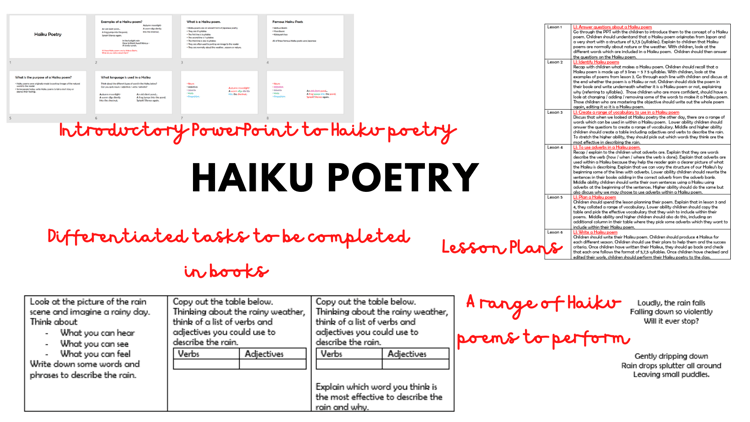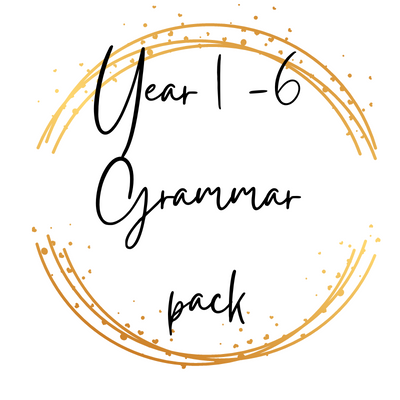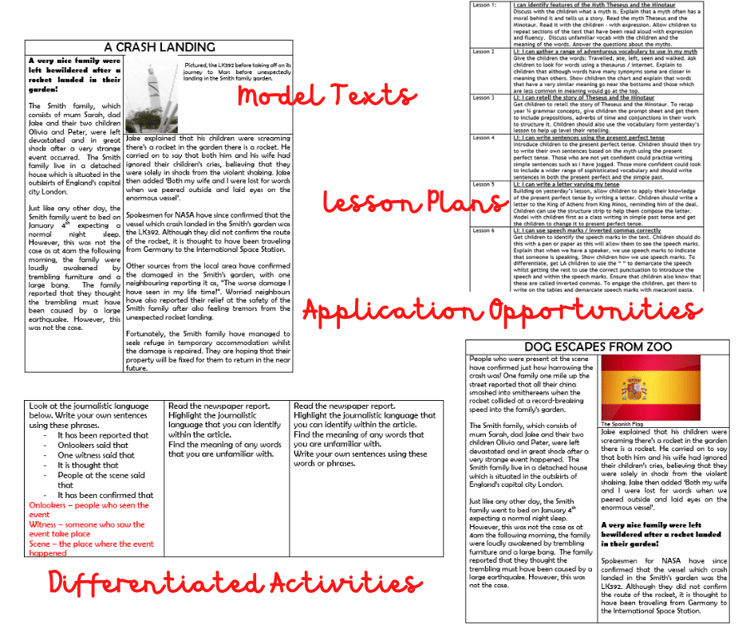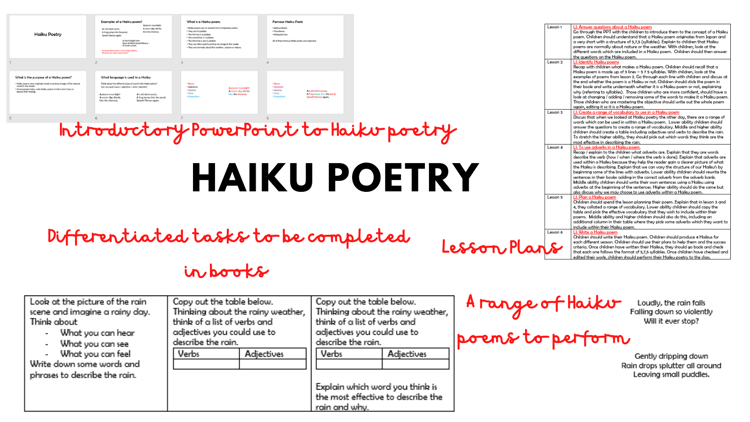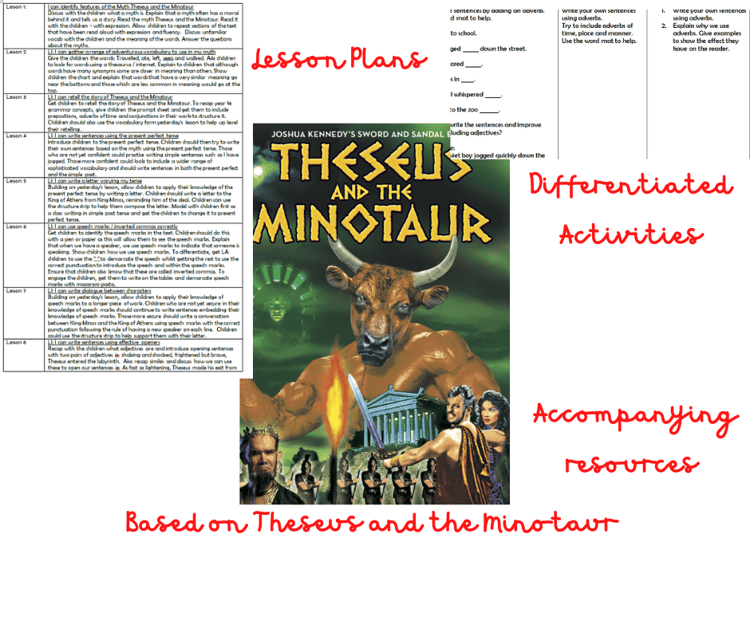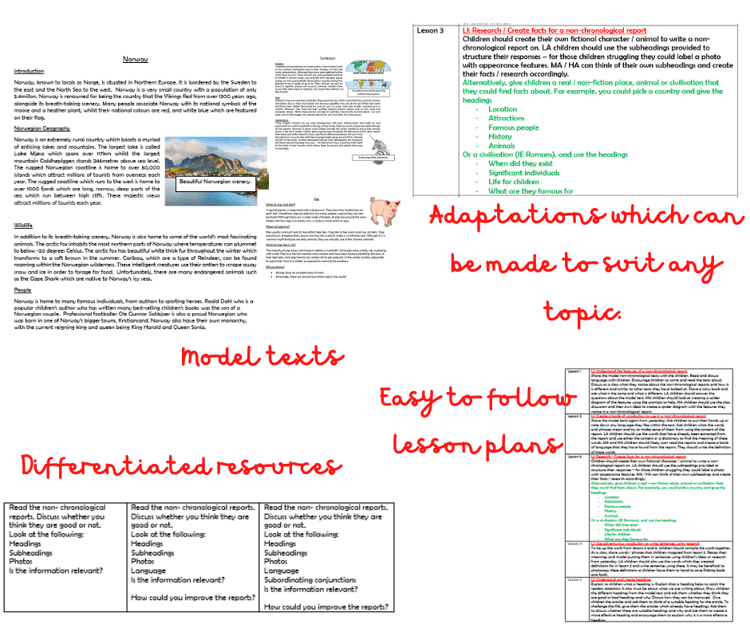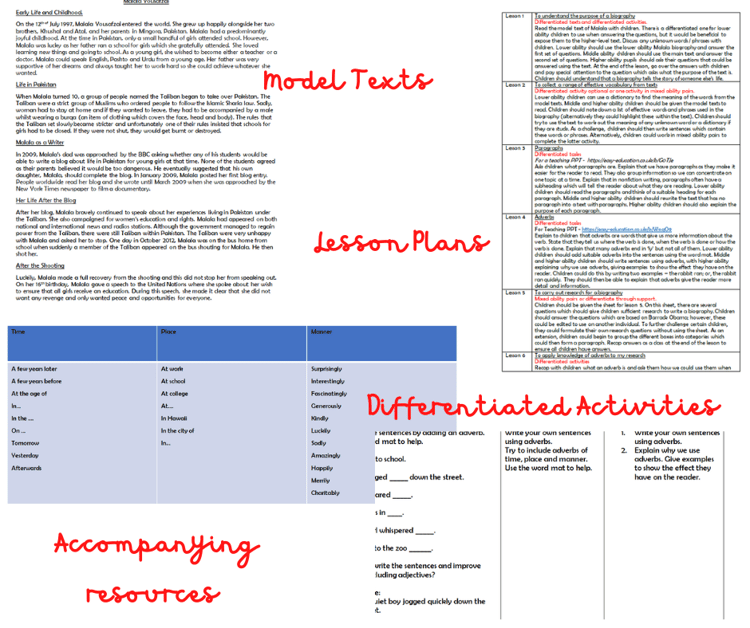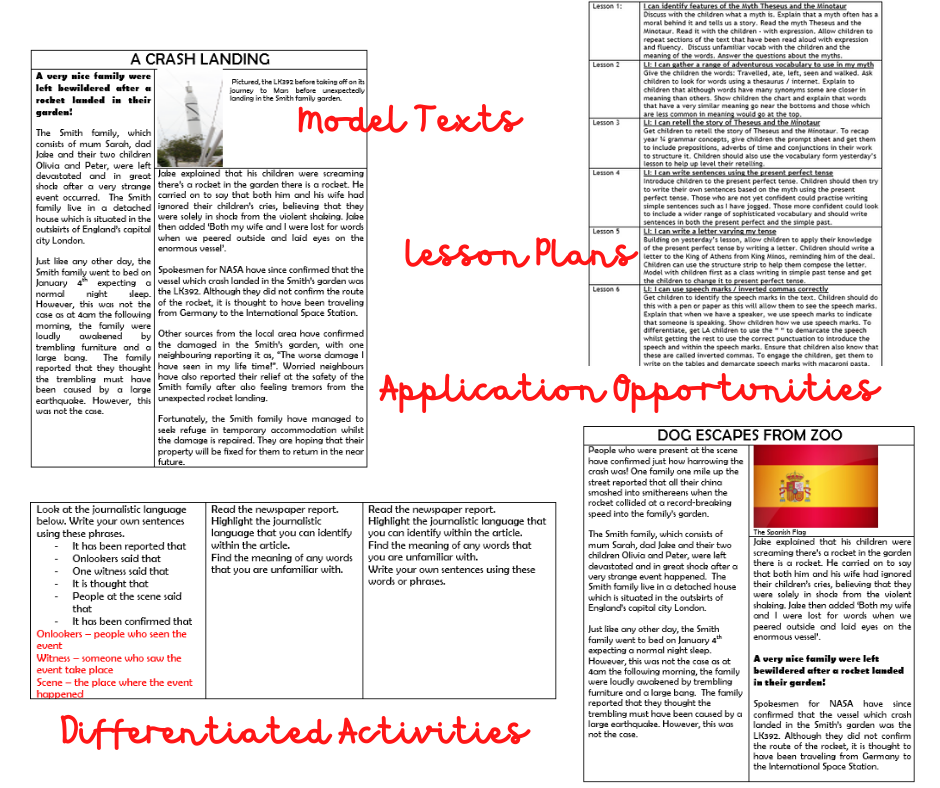
Newspapers Y4
On Sale
£2.50
£2.50
A unit on newspaper reports, based on the year 4 curriculum, consisting of 13 lessons. The pack includes 13 lessons which are fully resourced with differenitated tasks, accompanying resources and model texts. This unit focuses on producing a newspaper on the text The Iron Man by Ted Hughes; however, the unit is adaptable meaning it can be adapted to suit any topic or event.
Lesson 1 - Understand the features of a newspaper
Lesson 2 - Understand facts and opinions
Lesson 3 - To identify the 5Ws and 1H.
Lesson 4 - Understand what journalistic language is
Lesson 5 - Write sentences using direct speech
Lesson 6 - Write sentences using reported speech
Lesson 7 - Write a newspaper introduction
Lesson 8 - Newspaper Headlines
Lesson 9 - Identify the features of a newspaper
Lesson 10 - Evaluate a newspaper
Lesson 11 - Improve a newspaper
Lesson 12 - Plan a newspaper
Lesson 13 - Write a newspaper report
Curriculum Aims
Lesson 1 - Understand the features of a newspaper
Lesson 2 - Understand facts and opinions
Lesson 3 - To identify the 5Ws and 1H.
Lesson 4 - Understand what journalistic language is
Lesson 5 - Write sentences using direct speech
Lesson 6 - Write sentences using reported speech
Lesson 7 - Write a newspaper introduction
Lesson 8 - Newspaper Headlines
Lesson 9 - Identify the features of a newspaper
Lesson 10 - Evaluate a newspaper
Lesson 11 - Improve a newspaper
Lesson 12 - Plan a newspaper
Lesson 13 - Write a newspaper report
Curriculum Aims
- apply their growing knowledge of root words, prefixes and suffixes (etymology and morphology) as listed in - see English appendix 1 , both to read aloud and to understand the meaning of new words they meet
- read further exception words, noting the unusual correspondences between spelling and sound, and where these occur in the word
- develop positive attitudes to reading, and an understanding of what they read, by:listening to and discussing a wide range of fiction, poetry, plays, non-fiction and reference books or textbooks
- using dictionaries to check the meaning of words that they have read
- discussing words and phrases that capture the reader’s interest and imagination
- retrieve and record information from non-fiction
- They should also learn the conventions of different types of writing (for example, the greeting in letters, a diary written in the first person or the use of presentational devices such as numbering and headings in instructions).
- In using non-fiction, pupils should know what information they need to look for before they begin and be clear about the task
- use the first 2 or 3 letters of a word to check its spelling in a dictionary
- write from memory simple sentences, dictated by the teacher, that include words and punctuation taught so far
- plan their writing by:discussing writing similar to that which they are planning to write in order to understand and learn from its structure, vocabulary and grammar
- in non-narrative material, using simple organisational devices [for example, headings and sub-headings]
- assessing the effectiveness of their own and others’ writing and suggesting improvements
- proposing changes to grammar and vocabulary to improve consistency, including the accurate use of pronouns in sentences
- using and punctuating direct speech
